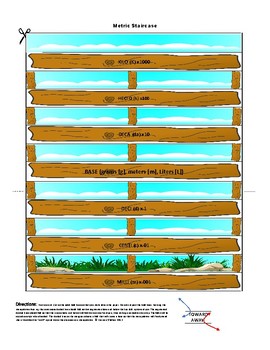Metric Conversion Staircase 3D Foldable Manipulative Full Color Powers of Tens
- PDF
Description
This is a color version of my popular Metric Staircase Conversion Manipulative. Cut and fold to use this 3D graphic organizer as a manipulative tool in your science or mathematics classes to help students visually understand the process behind metric conversion. Along with teaching decimal manipulation, this manipulative will provide a concrete example of differentiated instruction that will prove to help your students understand that unit conversion is a scale that is exact and measurable. For best results, print on card stock paper and after folding, allow students to use a place marker, such as a thumbtack (or Velcro pieces that you can easily make), to "walk" up and down the steps giving them a visual example of decimal placement. If, for example, the student needs to convert meters to centimeters, he or she will walk down the steps from the base unit in the middle two steps down to the centimeter step. This tells him or her to move the decimal two spaces back or to the right, so that 3.8 meters becomes 380.0 centimeters. This is a great tool to teach powers of tens and help with exponents and scientific notation!



